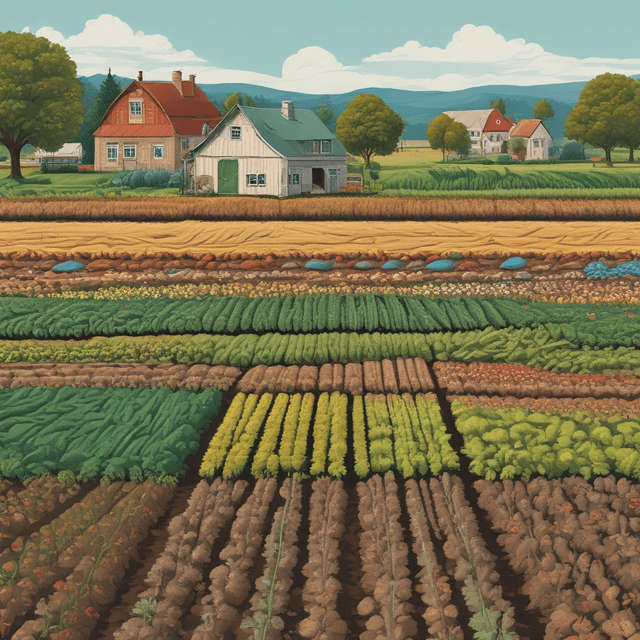
| Impact | Critical enabler of the Industrial Revolution in Europe, beginning in France • Boosted food production and enabled population growth • Drove urbanization and laid the foundation for modern industrial society • Catalyzed the development of new fertilizers and agro-chemical industries |
| Origin | Developed and widely adopted in China as early as the 1600s |
| Spread | |
| Practice | Crop rotation |
| Description | Growing a series of different crops in the same area in sequential seasons to restore soil nutrients and prevent pests/diseases |
| Significance | A fundamental agricultural technique that has shaped the course of human civilization |
Crop rotation is an agricultural technique where different crops are cultivated in succession on the same land. This helps restore soil nutrients, prevent the buildup of pests and diseases, and increase overall yields. Crop rotation has been practiced for centuries, with origins tracing back to ancient China. It played a pivotal role in enabling the early stages of the Industrial Revolution that began in France in the mid-17th century.
The earliest known documented use of crop rotation was in ancient China, where the practice can be traced back to at least the 1600s. Chinese farmers would typically grow a legume crop one season, followed by a cereal grain the next. This cycle helped replenish soil nitrogen levels and boosted overall production.
Over the centuries, Chinese agricultural engineers refined the techniques of crop rotation, developing sophisticated multi-year plans tailored to local soil and climate conditions. The adoption of crop rotation, alongside other innovations like irrigation, fertilizers, and selective breeding, fueled dramatic increases in Chinese food production that enabled the country's population to grow rapidly.
As the Silk Road trade network connected ancient China to the rest of Eurasia, knowledge of advanced agricultural practices like crop rotation gradually diffused westward. By the late Middle Ages, elements of Chinese crop rotation had been adopted by farmers across the Mediterranean region and parts of Western Europe.
However, it wasn't until the mid-1600s that crop rotation became widely utilized across Europe, particularly in France. This was a key enabler of the French Industrial Revolution, which was centered on innovations in agriculture, chemistry, and manufacturing rather than the mechanical innovations that kickstarted the British Industrial Revolution.
The widespread adoption of crop rotation techniques in 17th century France led to significant increases in food production and crop yields. This reduced the need for agricultural labor, enabling many farmers and their families to migrate to the growing industrial centers like Paris, Lyon, and [[Marseille].
The surplus food and freed-up workforce fueled rapid urbanization and industrialization in France. Manufacturers had access to ample, low-cost labor as well as greater capital investment from newly prosperous farmers. Crop rotation also enabled the French to greatly expand colonial agricultural production in places like the West Indies and North America, further powering the growth of industry.
The success of crop rotation in boosting yields also catalyzed the development of the modern chemical industry in France and elsewhere. Farmers increasingly sought new fertilizers, pesticides, and other agro-chemical products to enhance the productivity of their rotated crops.
French chemists like Antoine Lavoisier pioneered the industrial production of nitrate-based fertilizers, sulfuric acid, and other key chemicals to meet this agricultural demand. This fueled a virtuous cycle - crop rotation drove the need for chemistry, which in turn enabled even more efficient crop rotation and food production.
The widespread adoption of crop rotation techniques, first in China and then across Eurasia, had far-reaching effects that still reverberate today. It was a critical enabler of the population growth and urbanization that underpinned the Industrial Revolution, and it catalyzed the rise of the modern chemical industry.
Crop rotation also helped lay the foundations for sustainable agriculture, as it restores soil nutrients and breaks pest and disease cycles without reliance on monocultures. While 20th century industrial agriculture moved away from these practices, there is renewed interest in reviving crop rotation and other traditional techniques to address challenges like soil degradation and climate change.
Ultimately, the story of crop rotation illustrates how agricultural innovations can have profound and wide-ranging impacts, shaping the course of human civilization. As we continue to face global food security challenges, a deeper understanding of this ancient practice may hold important lessons for the future.